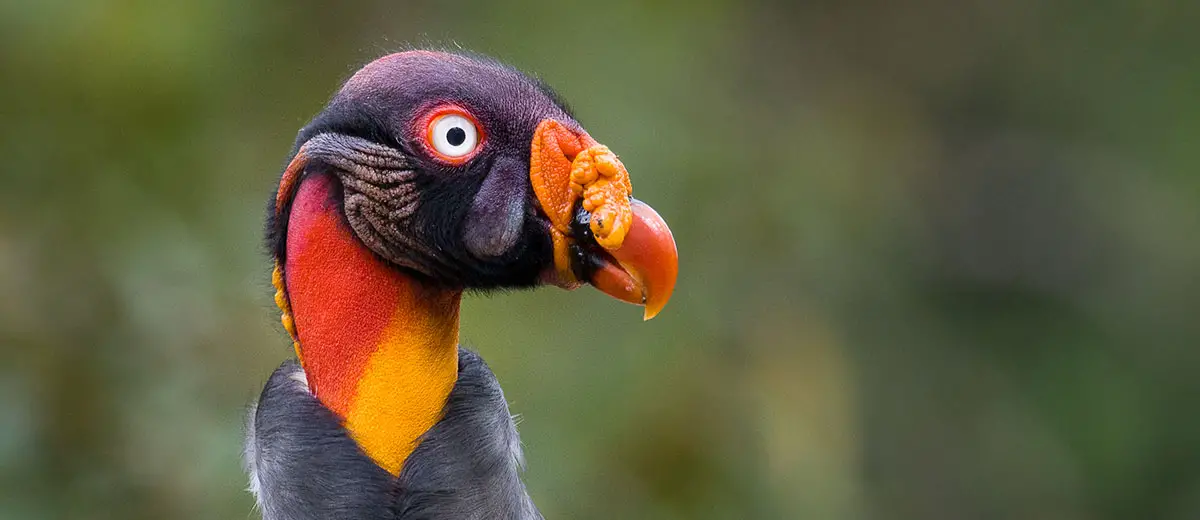What Are Birds of Prey? Explore All 13 Types of Raptor
Although they all are found within the same clade, this group of birds is not defined taxonomically, but by their physical characteristics and predatory behaviour. All birds of prey pursue other animals for food. What sets them apart from birds such as kingfishers and albatross—who also prey on other animals—are their hooked beaks used to tear apart flesh and their sharp talons, which allow them to catch larger prey than regular birds. They are often referred to as raptors, which comes from the Latin word raptare meaning “to seize and carry off” In this guide, we’ll explore 13 types of raptor including eagles, old-world vultures, new-world vultures, the beautiful secretary bird and owls. Let’s dive in!
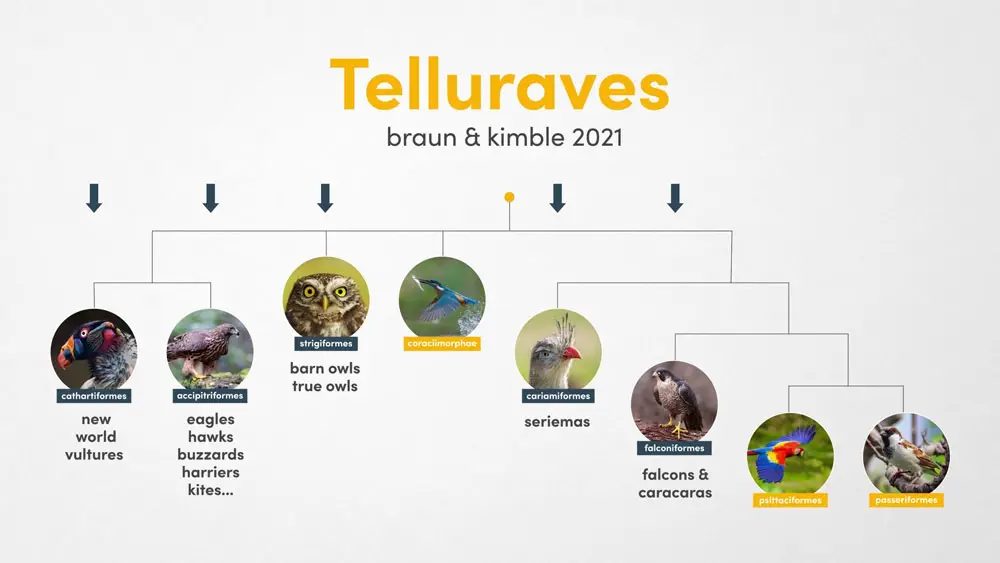
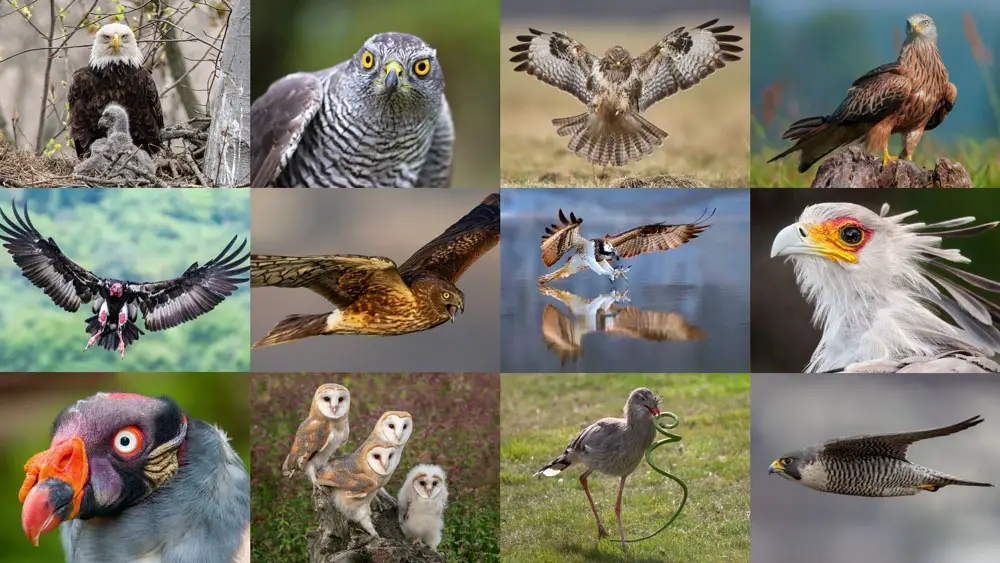
Left: Telluraves clade & Right 12 of the 13 Birds of Prey we’ll discuss
Contents
- Eagles | Steller’s Sea Eagle & Bald Eagle
- True Hawks | Eurasian Sparrowhawk & Pale Chanting Goshawk
- True Buzzards | Common Buzzard & Nest-Site Requirements
- Kites | Red Kite and Elanine, Milvine & Pernine Kites
- Harriers | Northern Harrier & Western Marsh Harrier
- Old World Vultures | White-Backed Vulture & Egyptian Vulture
- Ospreys | Eastern & Western Osprey
- Secretary Bird | Secretary Bird!
- New World Vultures | Andean Condor & King Vulture
- Owls | Barn Owls, Typicals Owls & Snowy Owl
- Seriemas | Red-Legged Seriema
- Falcons | Peregrine Falcon & Collared Falconet
- Caracaras | The Crested Caracara
01 Eagles
Eagles are perhaps the most revered birds of prey. They are split between several subfamilies in the Accipitridae family and are some of the most striking members of the animal kingdom. Subfamilies include booted eagles (Aquilinae) such as the martial eagle, giant forest eagles (Harpiinae) such as the harpy eagle and snake eagles (Circaetinae), which includes the Philippine eagle and the endangered Bateleur, the national emblem of Zimbabwe. Fish eagles, also known as sea eagles, are found in the subfamily Buteoninae along with many types of hawk and kite.
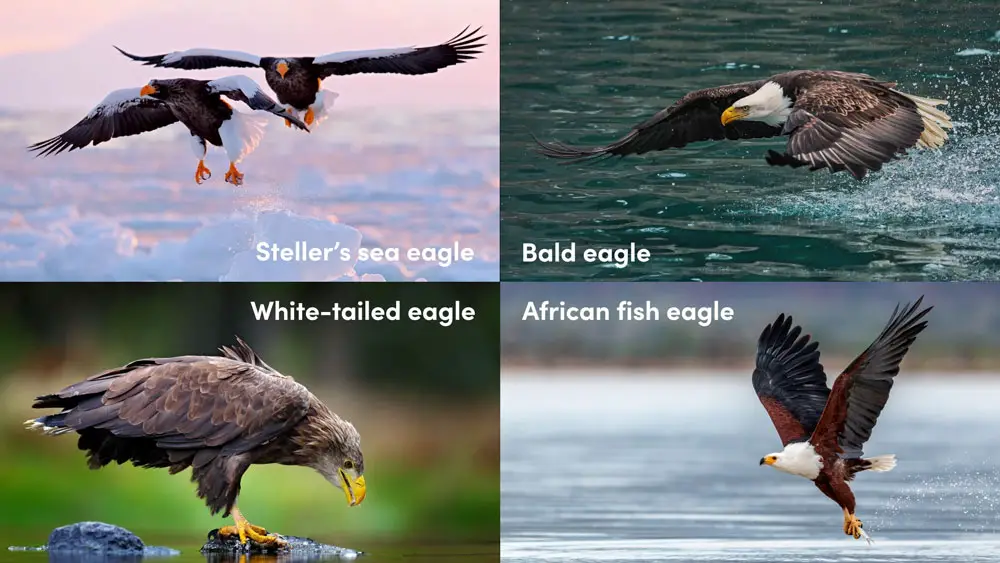
Among the largest and heaviest of these birds (females weigh up to 9 kg / 19.8 lbs), the Steller’s sea eagle exhibits a particularly unique and thick plumage equipping them well for their frigid environment. They are found in far eastern Eurasia where they have a relatively small range. They spend most of the year around the Kamchatka peninsula and mainland areas at the same latitude. They breed further north and will spend the winters further south on Hokkaido and as far south as the Korean peninsula. Being sea eagles, they live on the coast and survive mostly on a diet of fish, particularly salmon. They are usually solitary but will congregate to breed or when the salmon are plentiful.
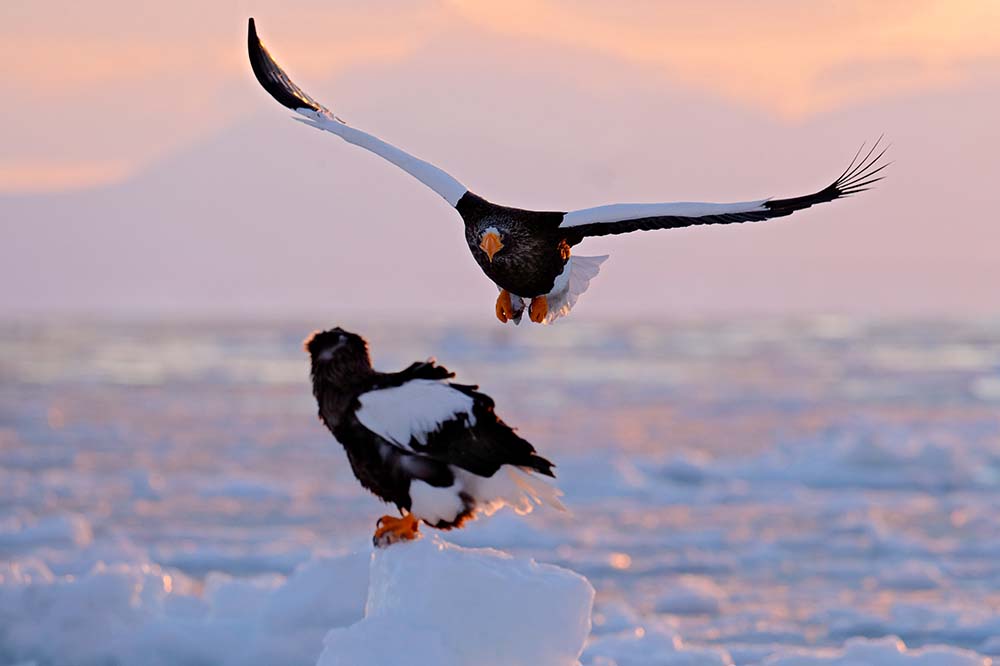
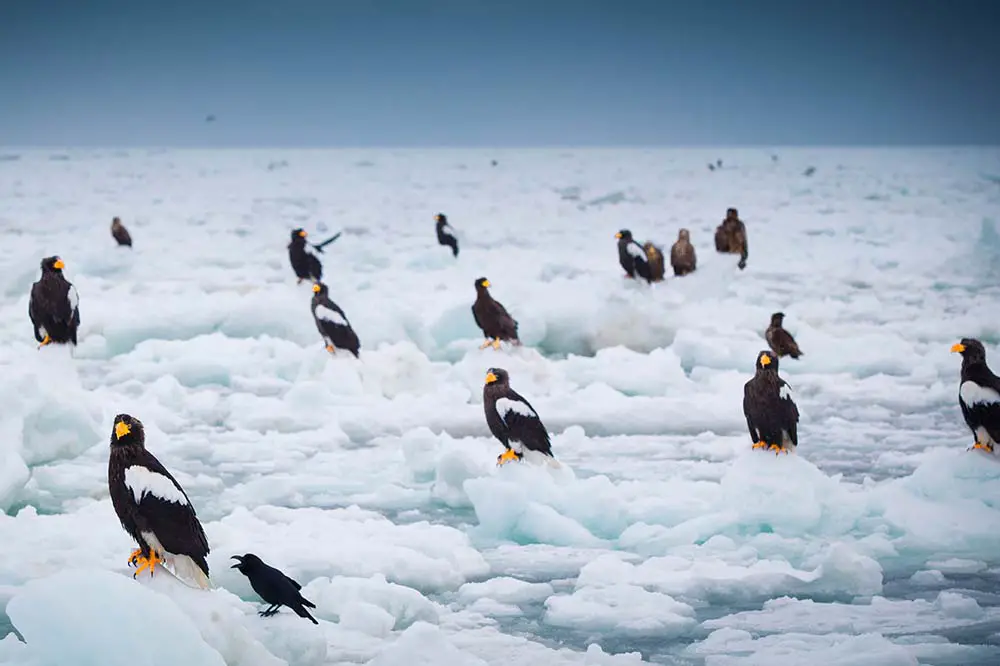
Left: Steller’s Sea Eagle, Hokkaido, Japan | Ondrej Prosicky / Shutterstock & Right: Steller’s Sea Eagle in Winter, Shiretoko Peninsula, Hokkaido, Japan | Phubet Juntarungsee / Shutterstock
Another type of sea eagle, the bald eagle is found in the same genus and has been a powerful symbol of American independence for well over 200 years. They exhibit an iconic white head and tail and a dark brown body. One of their most interesting traits is their nest building, which usually begins around 1-3 months before mating season. These nests can be gigantic with the largest structure ever recorded in St. Petersburg, Florida measuring almost 10 feet in diameter, 20 feet in depth and weighing almost 3 tons.
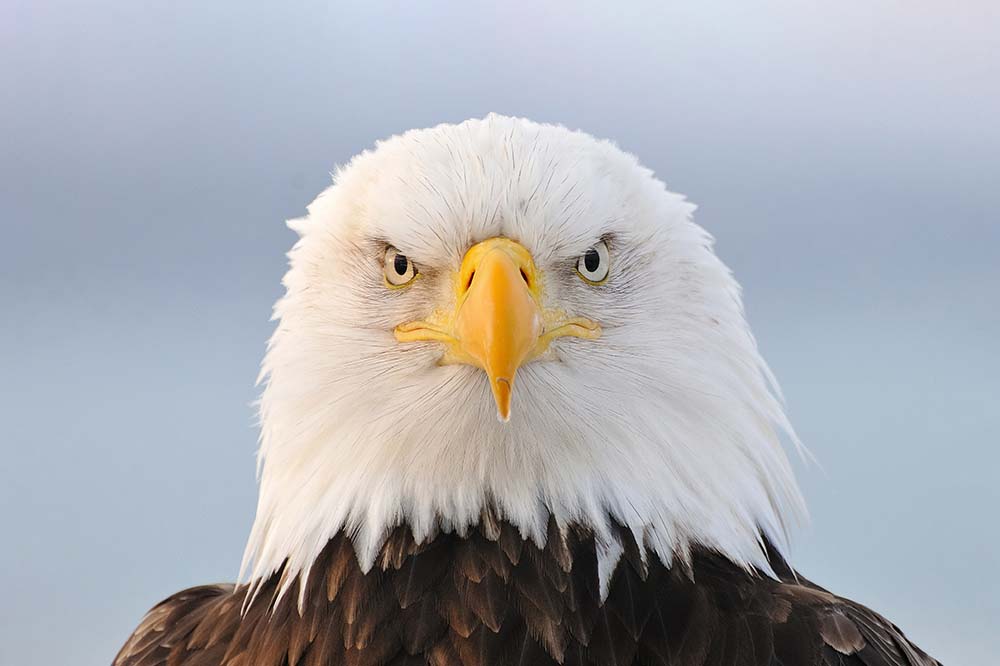
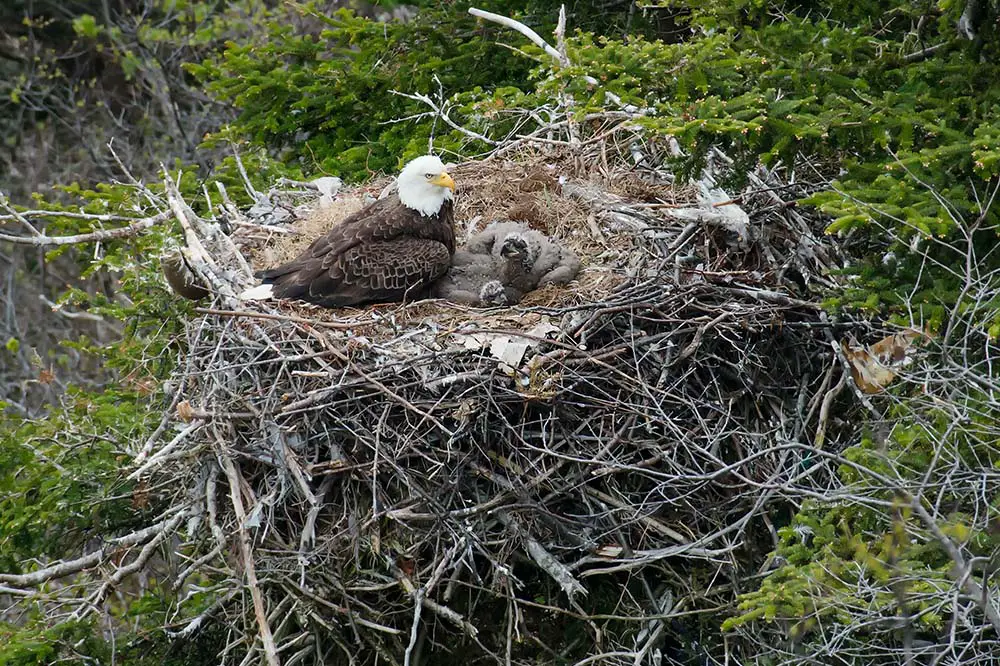
Left: Bald Eagle in Alaska | Ludo KOOS / Shutterstock & Right: Adult Bald Eagle standing guard over two chicks, St. John’s, Newfoundland and Labrador, Canada | Paul Reeves Photography / Shutterstock
02 True Hawks
All birds of prey have excellent eyesight but hawks, in particular, have a visual acuity around 8 times that of a human being. Along with eagles, they are part of the Accipitridae family, as well as buzzards, kites, harriers and old-world vultures all of which we’ll discuss in the following chapters. Although the term hawk is often used much more broadly, true hawks are all contained within the Accipitrinae subfamily where two types of hawk make up the majority of species, goshawks and sparrowhawks. Being much smaller than eagles, hawks will consume a large amount of invertebrates and prey on small mammals, reptiles and other birds ranging from hummingbirds, preyed up upon by the tiny hawk, to larger birds such as grouse preyed upon by goshawks (Northern Goshawk).
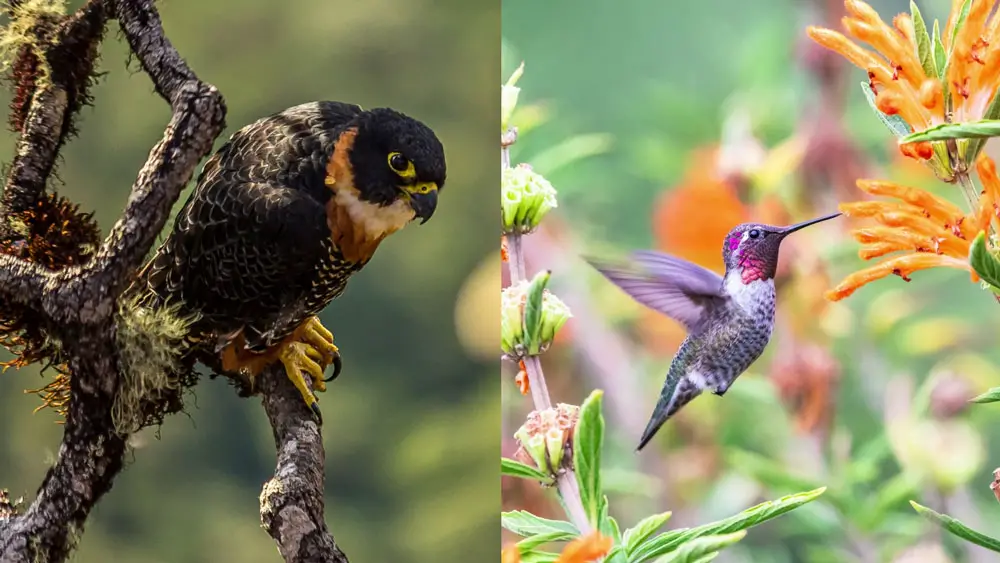
Hawks are well-known for their manoeuvrability and will dart gracefully through dense vegetation to catch prey in the forests they inhabit. The Eurasian sparrowhawk is an excellent example of the reversed sexual dimorphism that occurs in many but not all raptors. While we are not exactly sure why this happens, males are much smaller, weighing at most 196g (6.9oz) with females weighing close to double, topping out at around 342g (12oz). One of the most unique species of hawk is the Pale Chanting Goshawk, found throughout much of Southern Africa. In contrast to many other types of hawk, their plumage is a rich grey colour with a black tail and they come with matching orange beak and legs!
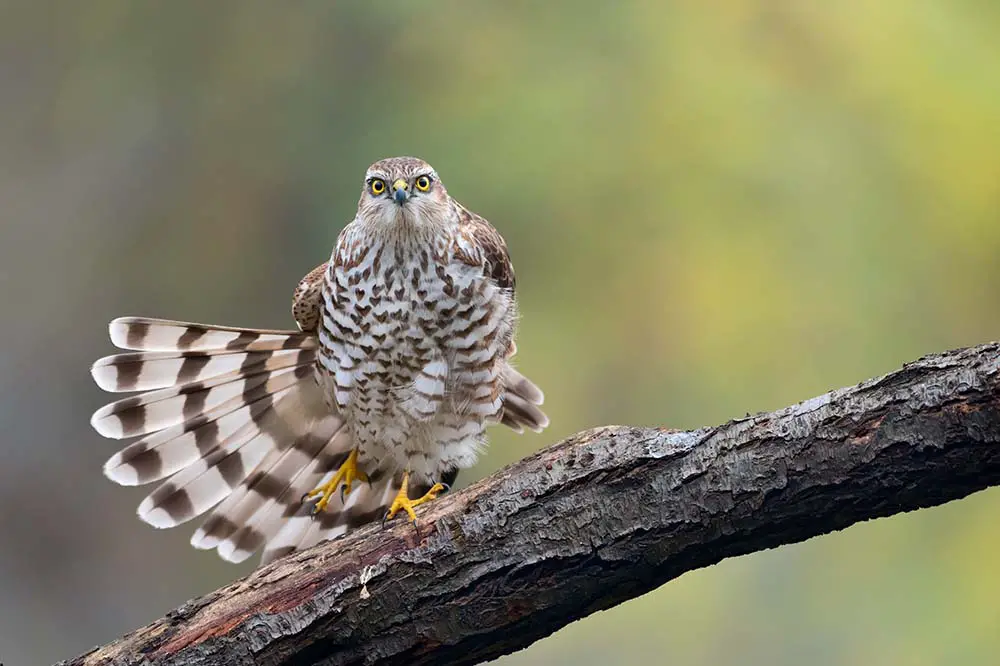
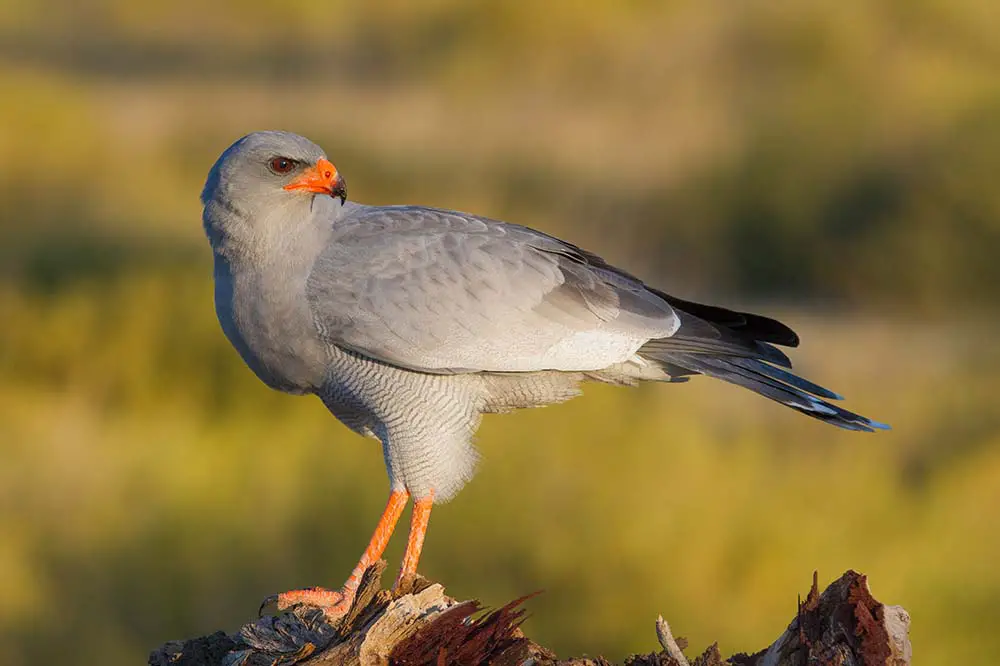
Left: The Eurasian sparrowhawk | Kalina Georgieva / Shutterstock & Right: Pale Chanting Goshawk Otto du Plessis / Shutterstock
03 True Buzzards
Where true hawks are contained within a single subfamily, true buzzards are contained within a single genus, Buteo. The members of this genus are also referred to as hawks in the new world but are known as buzzards elsewhere. There are almost 30 species found within this genus including the common buzzard, the eastern buzzard, also known as the Japanese buzzard, and the Gray-lined hawk, which has a unique plumage. As with many types of raptor, the common buzzard’s range is split up into three parts. Their resident range, where they spend most of their time, covers almost all of Europe. Their breeding range extends into northern Scandinavia and as far east as Mongolia and their winter range extends as far south as the southern tip of Africa.
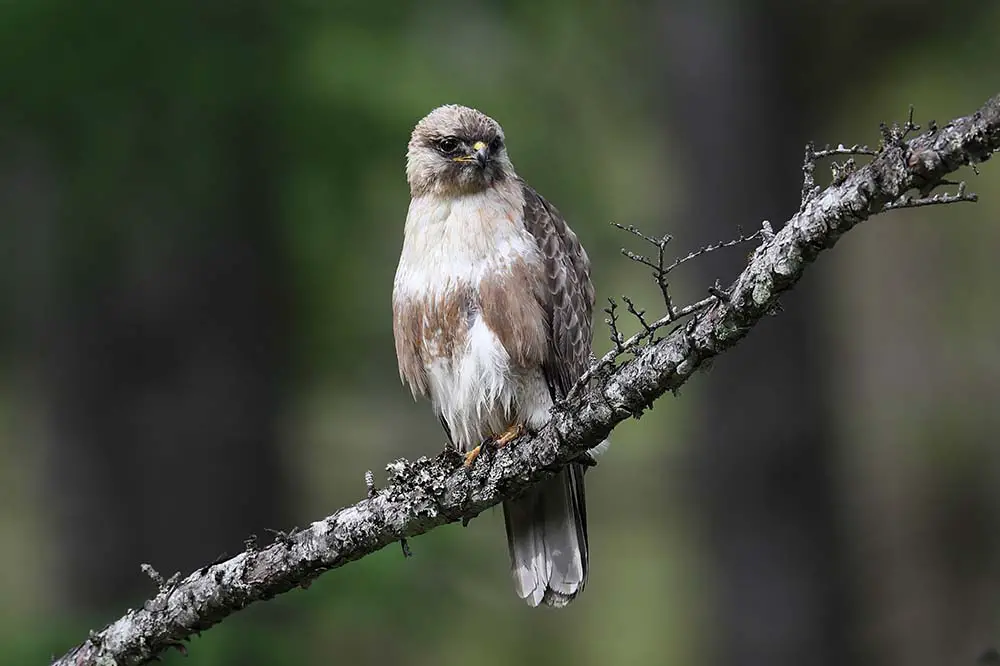
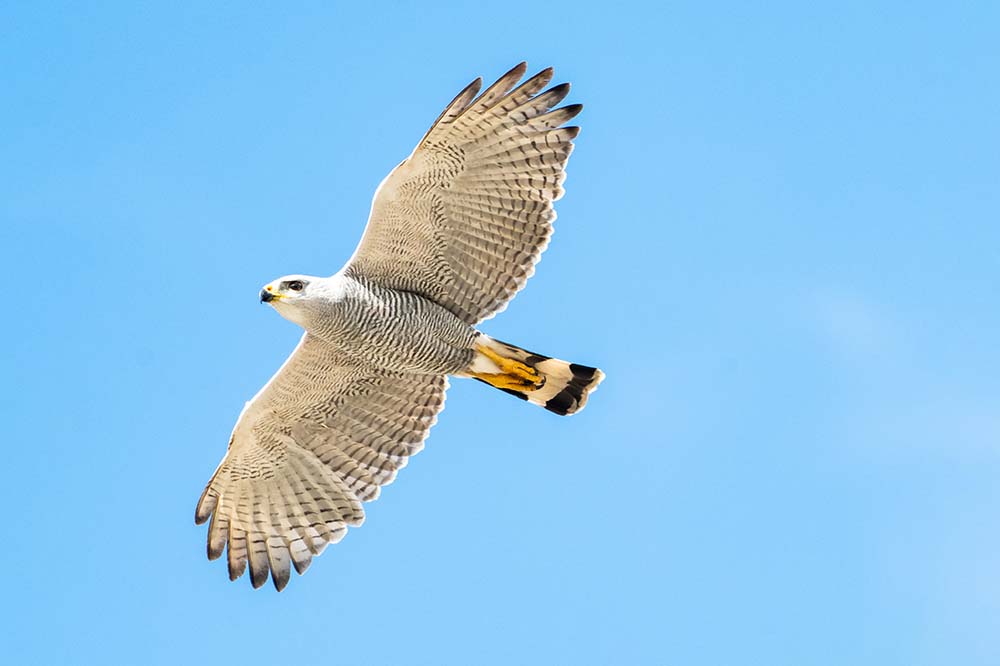
Left: Eastern buzzard also known as the Japanese buzzard | Hawk777 / Shutterstock & Right: A Gray-lined hawk hunts above on a clear day | Chelsea Sampson / Shutterstock
We all go on vacation when it’s cold, that’s relatable, but why do these birds have a different breeding range? Well, it turns out that raptors have very specific nest-site requirements that ensure the maximum survival rate for their young. This could mean trees at a certain height, a certain amount of space or perhaps the absence of a particular threat. As with any species, mums will go to great lengths to ensure the best for their kids and the common buzzard is no exception. As a closing note, there are also several other birds that are not contained in this genus but are still named as buzzards such as Australia’s black-breasted buzzard.
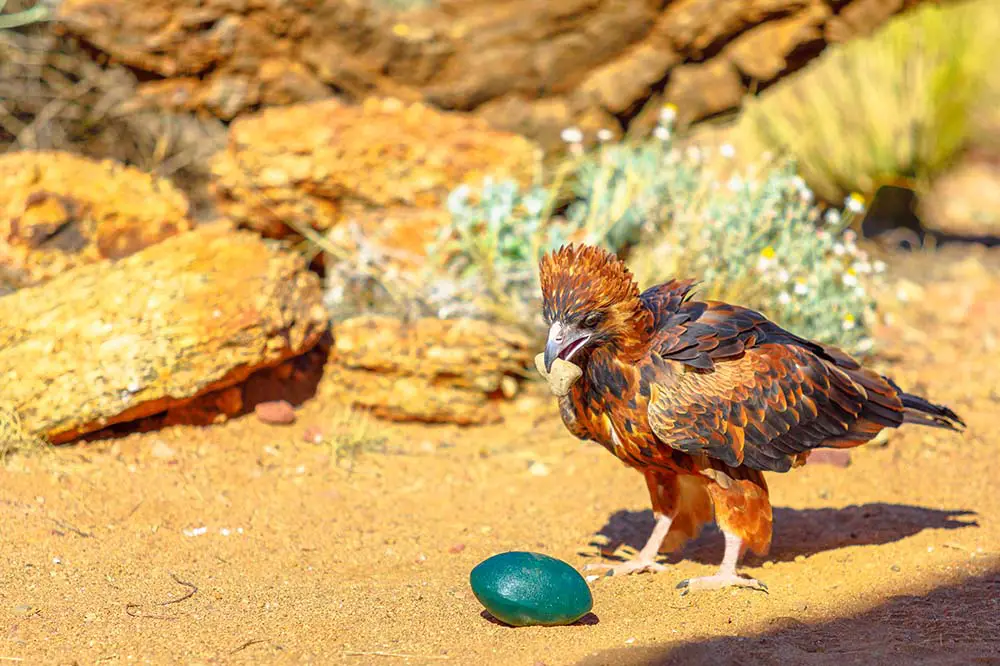
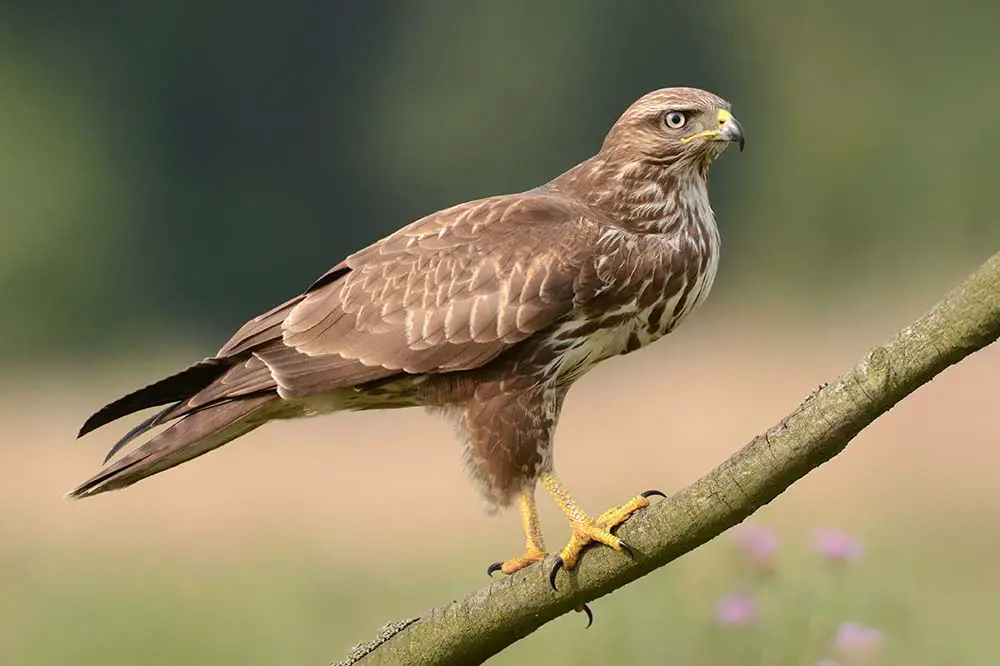
Left: Black-breasted buzzard | Benny Marty / Shutterstock & Right: Common buzzard (Buteo buteo) | Piotr Krzeslak / Shutterstock
04 Kites
Kites are a diverse group of birds split up between multiple subfamilies. The members of Elaninae are thought of as small kites and include some beautiful lighter-coloured raptors including the black-shouldered kite, found in Australia and the black-winged kite found throughout Africa, Asia and parts of southern Europe. Milvine kites are thought of as the larger kites and their taxonomic status is now subject to revision. Its members were previously considered a single subfamily, Milvinae, containing 8 genera. However, in more recent studies the Milvinae subfamily has been disbanded and its members split up between other subfamilies, with many now found within Buteoninae, which is also home to the sea eagles previously discussed.
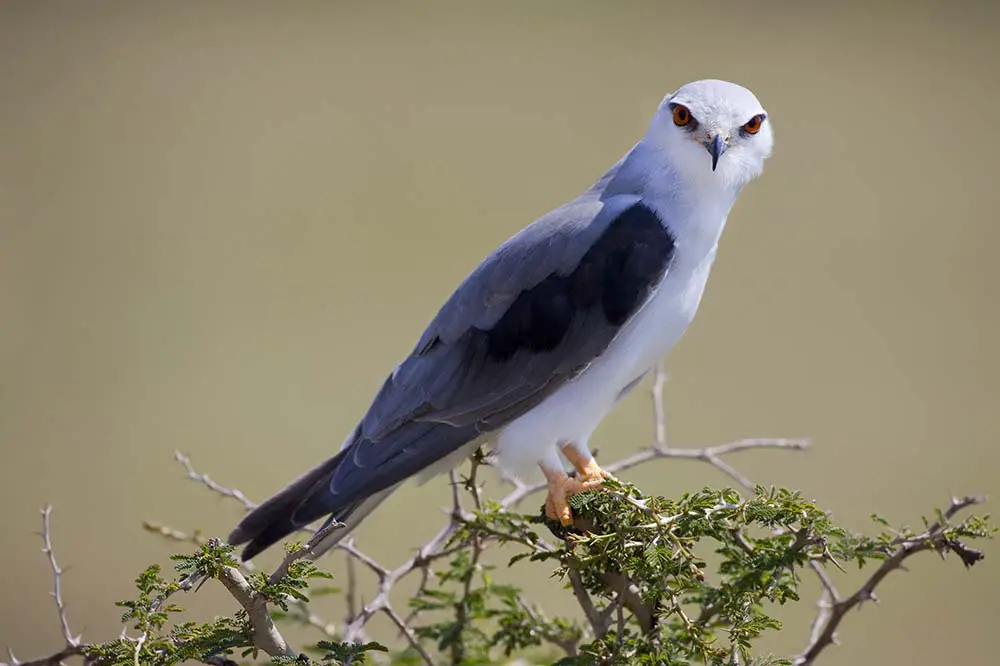
The red kite, contained in the Milvus genus, is thought of as the stereotypical kite and with their bright yellow claws and beak, it’s easy to see why these animals are now thought to be more closely related to eagles. They are medium-sized birds of prey with females weighing up to around 3 lbs (2.9lbs / 1.3kg) and are thought of primarily as scavengers although they will hunt small mammals, other birds and invertebrates, especially during breeding season. Finally, there are various members of the Perninae subfamily who are also considered kites such as the hook-billed kite who are found throughout Central and South America and have a particularly colourful face!
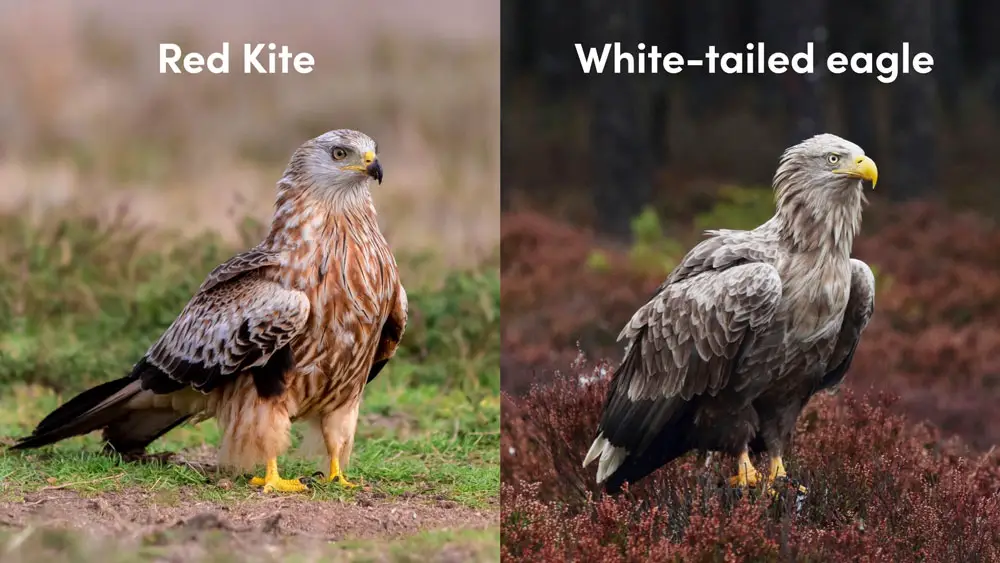
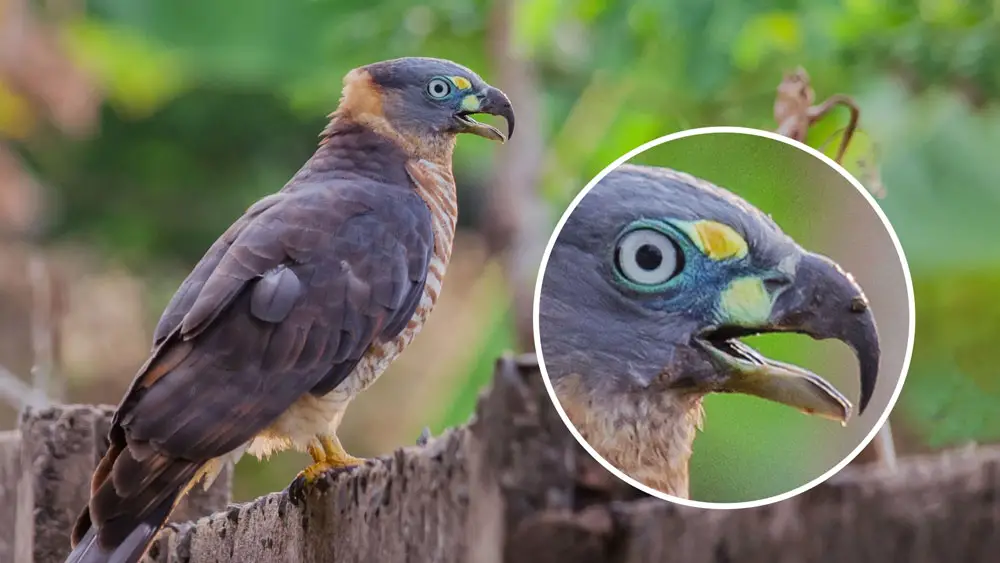
Left: Kite vs eagle & Right: Hook-billed kite female | Rafael Martos Martins / Shutterstock
05 Harriers
Harriers are all found within the Circus genus. They are famous for flying gracefully at a slow pace. So much so that the Harrier jump jet, an innovation of the 1960s was named after this group of birds. One of the most common species is the Northern harrier, whose disk-shaped faces are very similar to owls who also rely heavily on their hearing, and have stiff facial feathers that direct sound into their ears to help them detect prey. They are resident throughout much of the United States, migrating north into Canada and Alaska to breed and vacation in Central America, the Caribbean and Colombia.
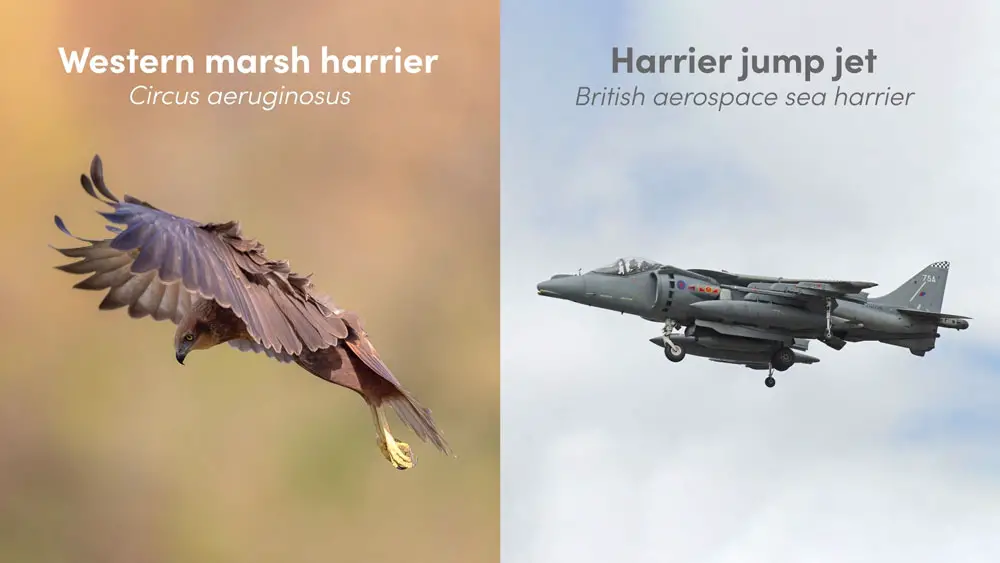
Fun fact, the entire family, Accipitridae, of which all previously discussed birds are part of, were previously thought to be contained in the order Falconiformes, which separated the diurnal raptors from their nocturnal companions, otherwise known as owls. However, falcons, which look very similar to hawks, are now thought to be much more distant. Other examples of harriers include the Western marsh harrier, which is the type species and the Hen harrier, which has a completely different colouration between sexes, with adult males exhibiting a grey plumage, while females and juveniles are found in brown.
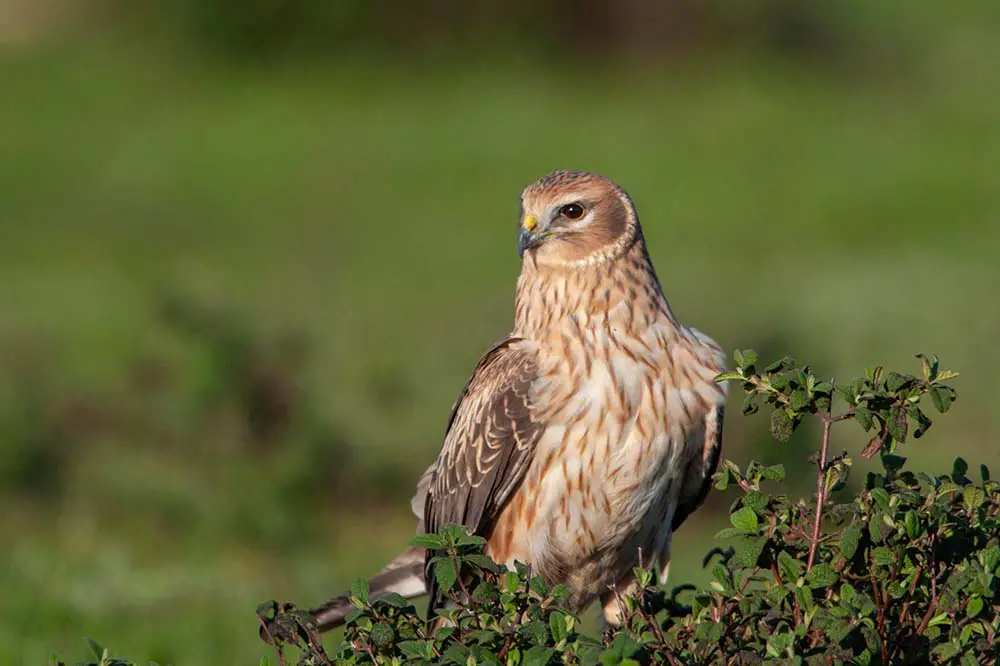
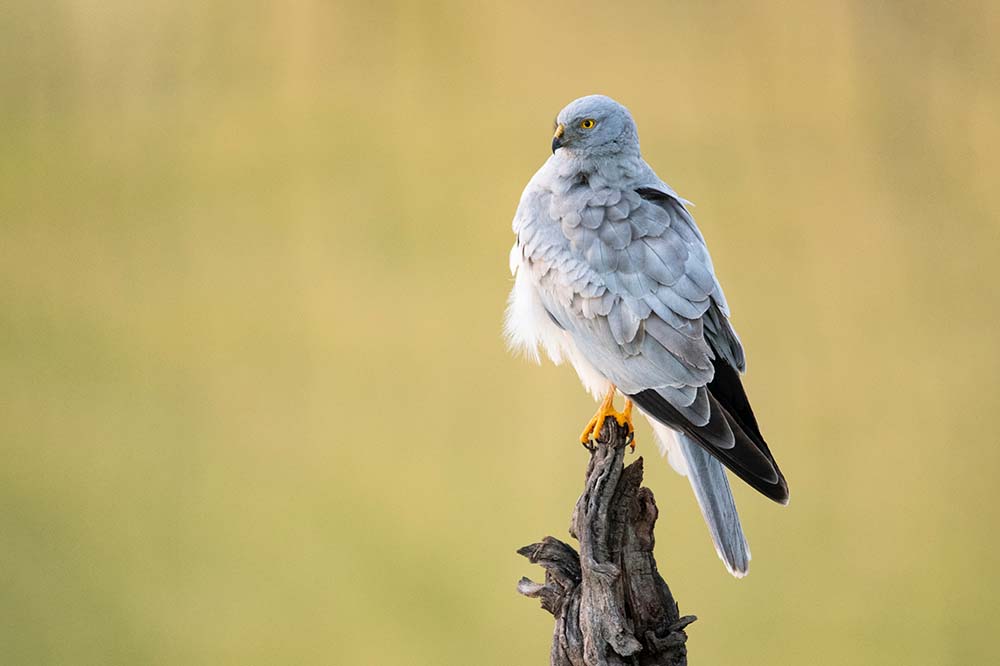
Left: Female hen harrier | alitellioglu / Shutterstock & Right: Male hen harrier | voh14 / Shutterstock
06 Old World Vultures
The last members of the Accipitridae family that we’ll discuss are thought of collectively as old world vultures and are split between two subfamilies; Gypiinae, which contains 13 of the 16 species, and Gypaetinae, which is now thought to also contain harrier hawks. The members of Gypiinae personify a vulture, at least in popular culture. The white-backed vulture is found throughout sub-Saharan Africa and although they have quite a large range, are critically endangered. The Indian vulture is found further east on the Indian subcontinent and into Southeast Asia and, unfortunately, are also critically endangered. Both of these species are known for their long slender necks with sparser and shorter feathers.
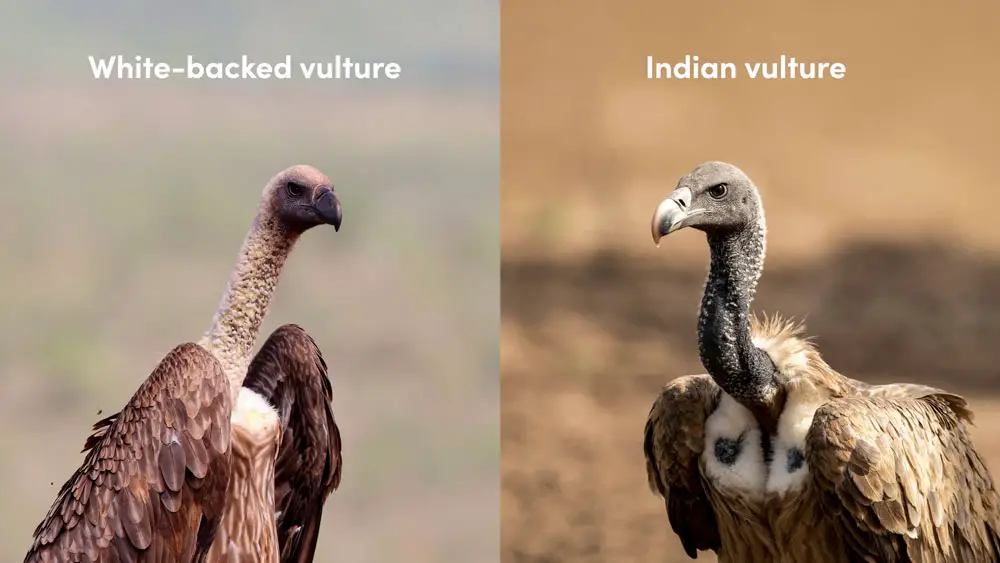
Vultures are scavengers with a keen sense of smell, which help them locate carrion. Because of this, their talons and beaks are weaker than other raptors who use them to kill their prey. Another spectacular species in this subfamily is the red-headed vulture, they have a similar but more contained range to the Indian vulture and are also critically endangered. The members of Gypaetinae are fascinating. They are also thought of as old-world vultures but differ considerably in their appearance; possessing the face of a classic vulture but with a body and stature much more similar to that of an eagle. The Egyptian vulture exhibits a mostly white plumage with an entirely yellow face and brown flight feathers; positioned along the trailing edge of the wing.
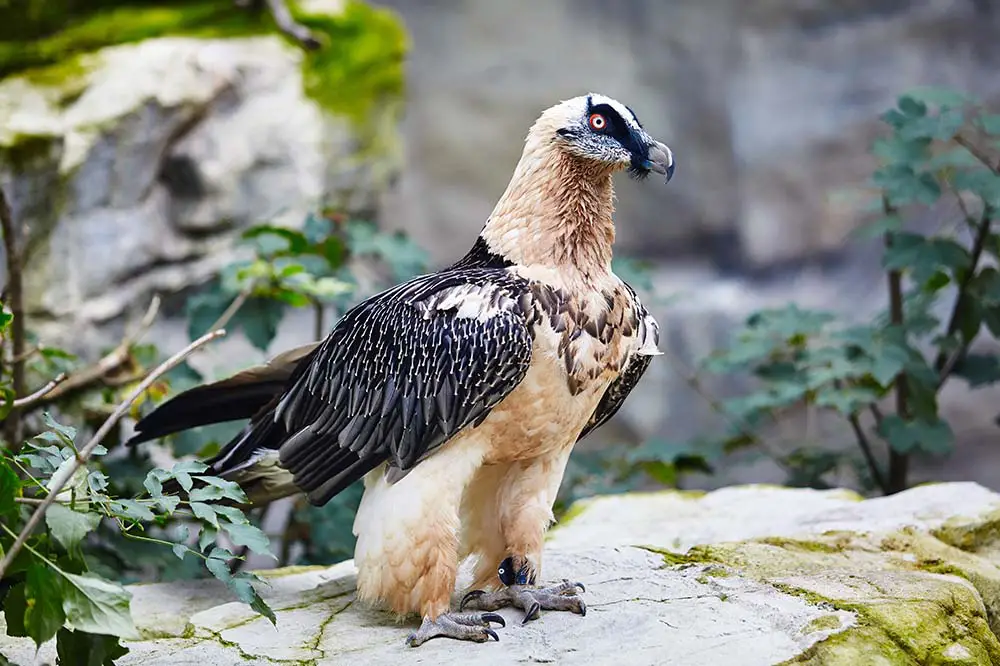
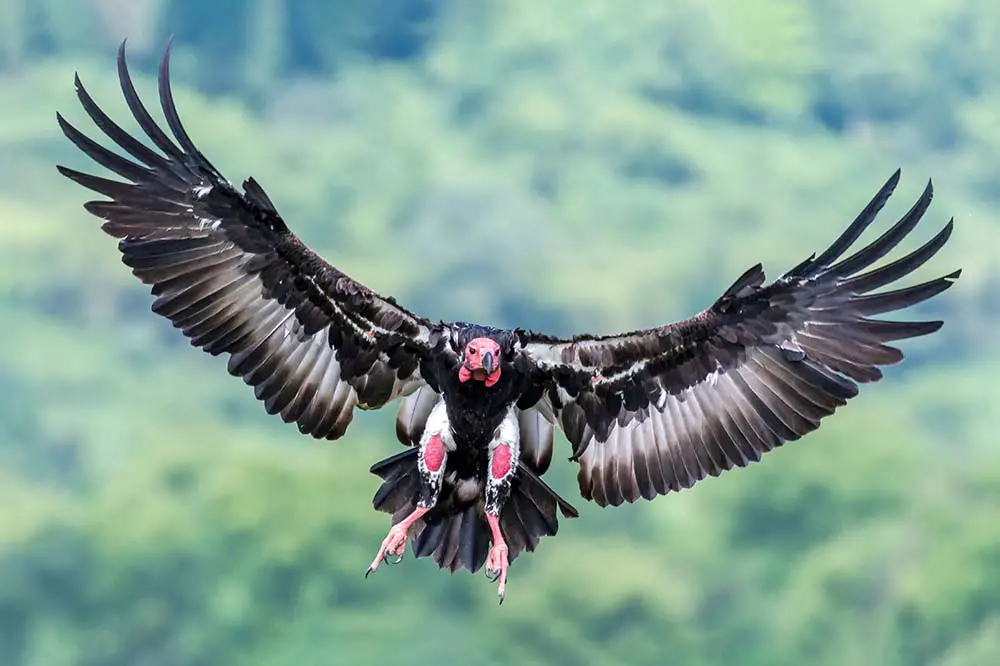
Left: Lammergeier or bearded vulture | Ewa Studio / Shutterstock & Right: Red-headed vulture with both wings open before landing | Ishor Gurung / Shutterstock
07 Ospreys
Ospreys are contained within Pandionidae, a family with a single genus and two species. They are also known as fish hawks and with over 99% of their diet being made up of fish, are classified as piscivores, an animal that survives almost entirely off of fish. These raptors are the closest relatives to the Accipitridae family along with new world vultures and the secretary bird, which we’ll discuss next.
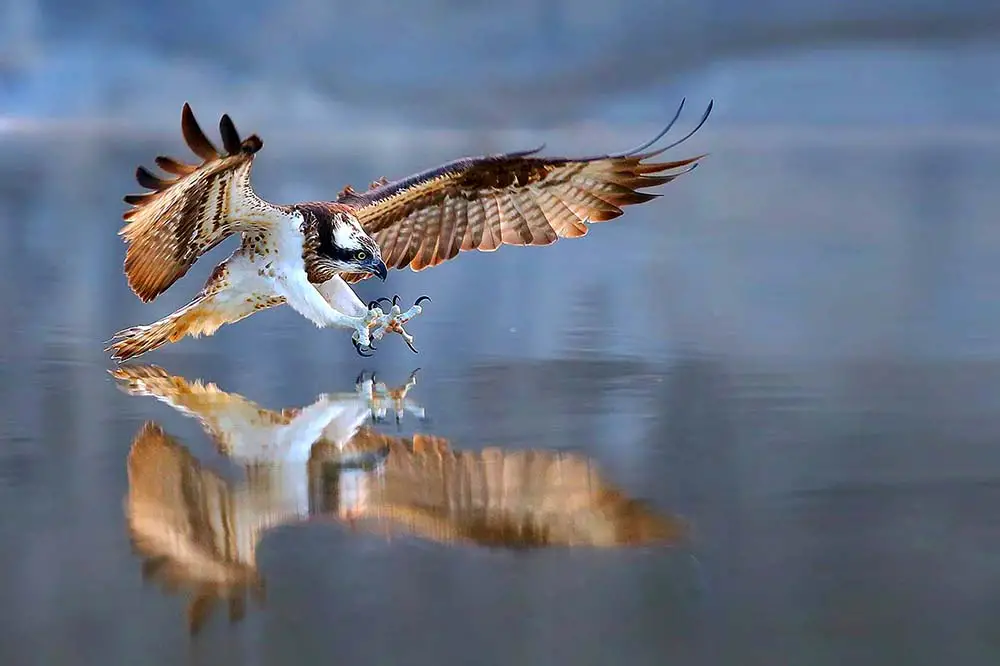
The two species, the eastern and western osprey, are seemingly identical in appearance but differ in range. The western osprey has a gigantic range, found throughout most of the world. The eastern osprey is located in Australia and the surrounding island nations of Oceania. Their nests are positioned high up in trees, cliffs or other features overlooking the waterways they inhabit and will house an average of three chicks each season who eagerly await the return of their fish-bearing mother.
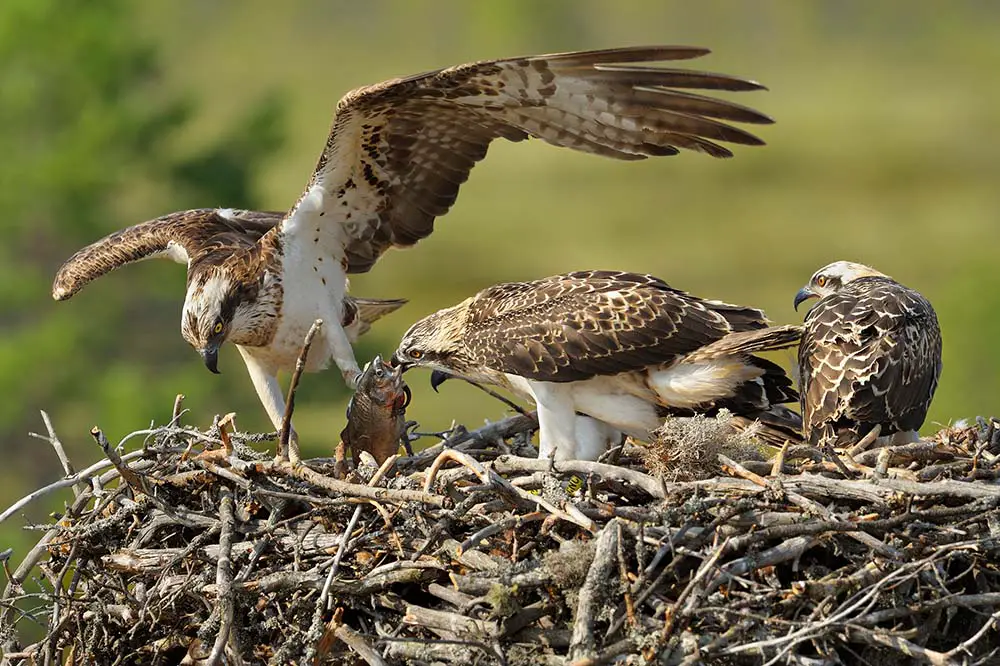
08 Secretary Bird
The secretary bird is found in sub-Saharan Africa and has a particularly unique appearance with long black feathers protruding from the back of its neck and a spectacular red to yellow gradient on its face, which can sometimes be pure yellow. They stand up to 1.2 m (3.9ft) tall with long slender legs that are uncommon for a bird of prey. Their range is not too dissimilar to the white-backed vulture, being found throughout most of sub-Saharan Africa, although these birds are also classified as endangered. Secretary birds are monogamous and are thought to form a breeding pair for life. Females usually lay around 1 to 3 eggs per season and chicks will stay with their parents for two to three months before reaching independence.
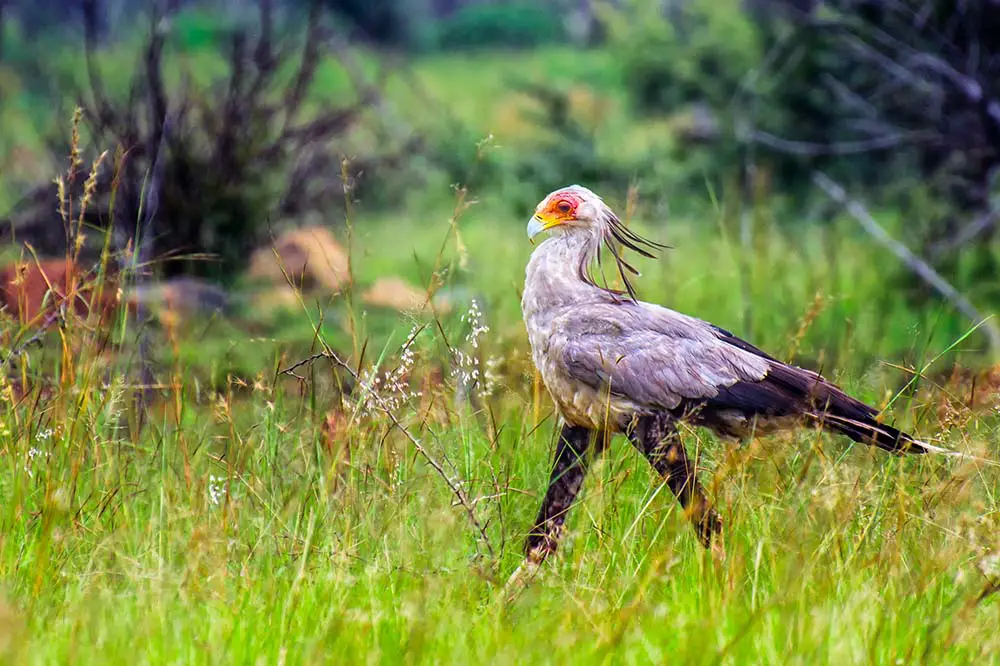
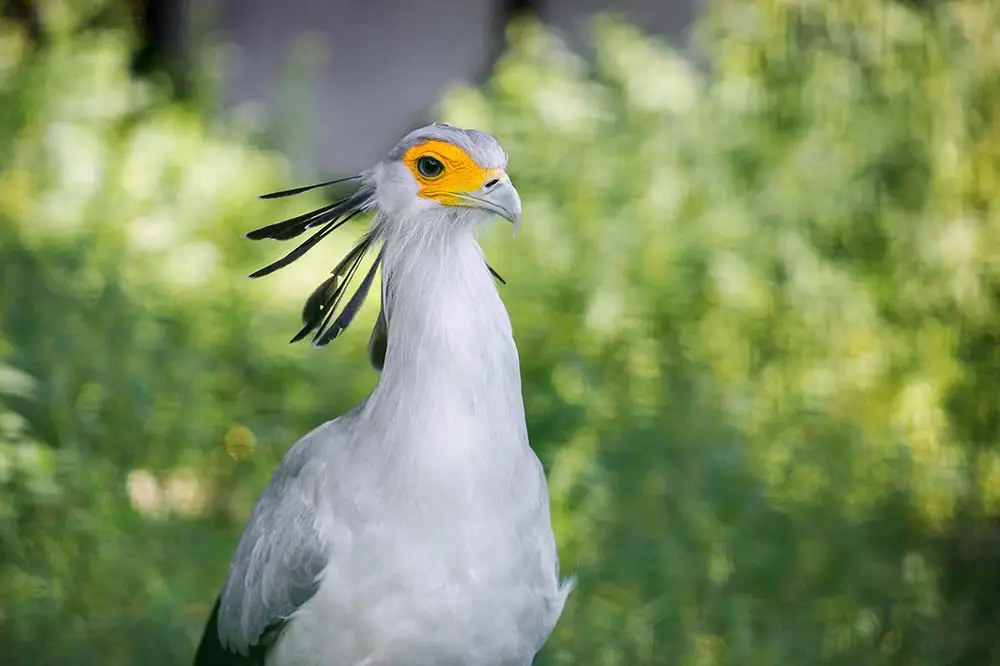
Left: Secretary bird in South Africa | Olaf Holland / Shutterstock & Right: Secretary bird with yellow face | Vera Reva / Shutterstock
09 Condors aka New World Vultures
The Andean condor is the largest flying bird in the world, weighing up to 33 lbs / 15 kg and processing a wingspan of up to 10.5 ft / 3.2 m. Unlike many birds of prey, the males of this species are significantly larger than the females and perhaps most interestingly, the colour of their irises differs between sex, males have brown irises, whereas females have red. Like all vultures, the Andean condor is a scavenger and uses the thermals found in mountainous or coastal terrain to soar above the surrounding landscape in search of carrion.
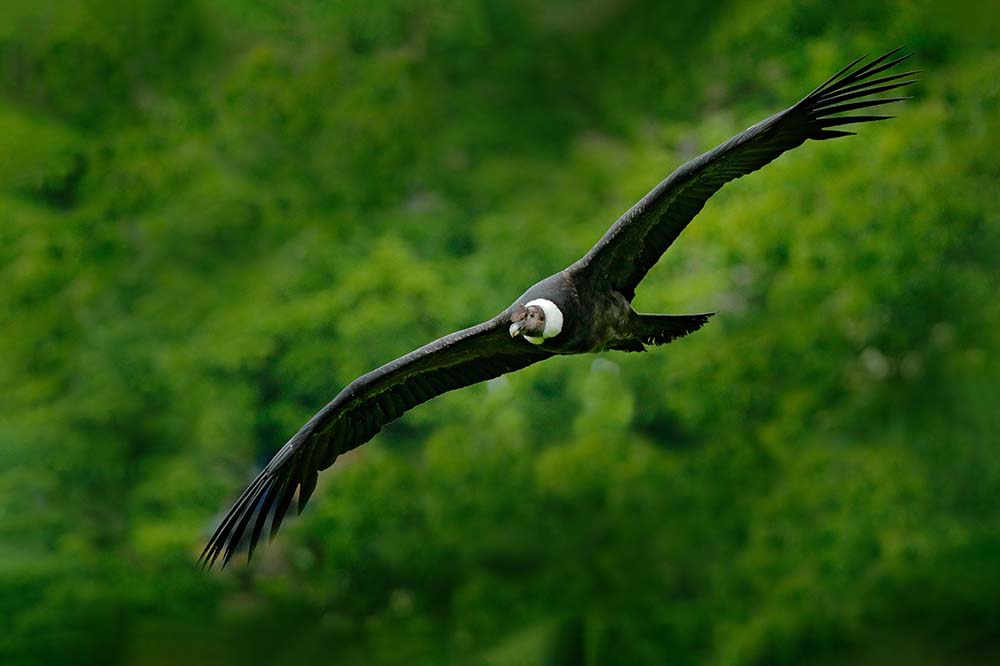

Left: Andean condor in Peru | Ondrej Prosicky / Shutterstock & Right: Andean condors, Torres del Paine, Chile | kavram / Shutterstock
Condors, also known as new world vultures, are a family of birds named Cathartidae, made up of 5 genera and 7 species including the turkey vulture, the California condor and the black vulture. They are found throughout the Americas, with the breeding range of the Turkey vulture extending into Canada. The King vulture is the last species we’ll discuss and rivals the secretary bird for the most colourful face! They are found in the emergent layer of tropical forests throughout most of Central and South America. These colourful creatures are much smaller than the Andean condor, weighing no more than 10lbs (9.9lbs / 4.5 kg).
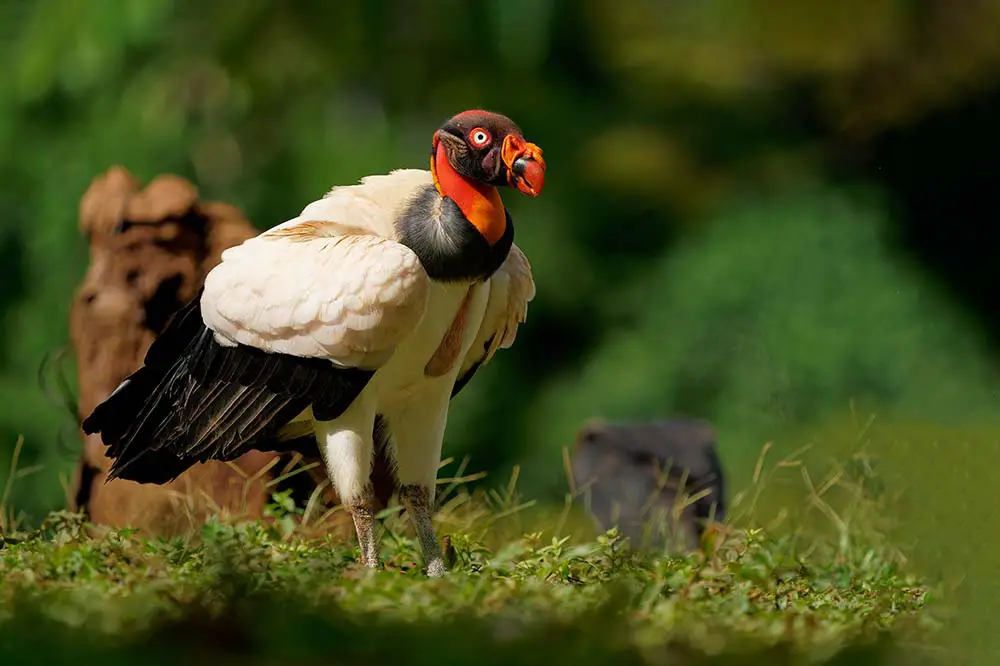
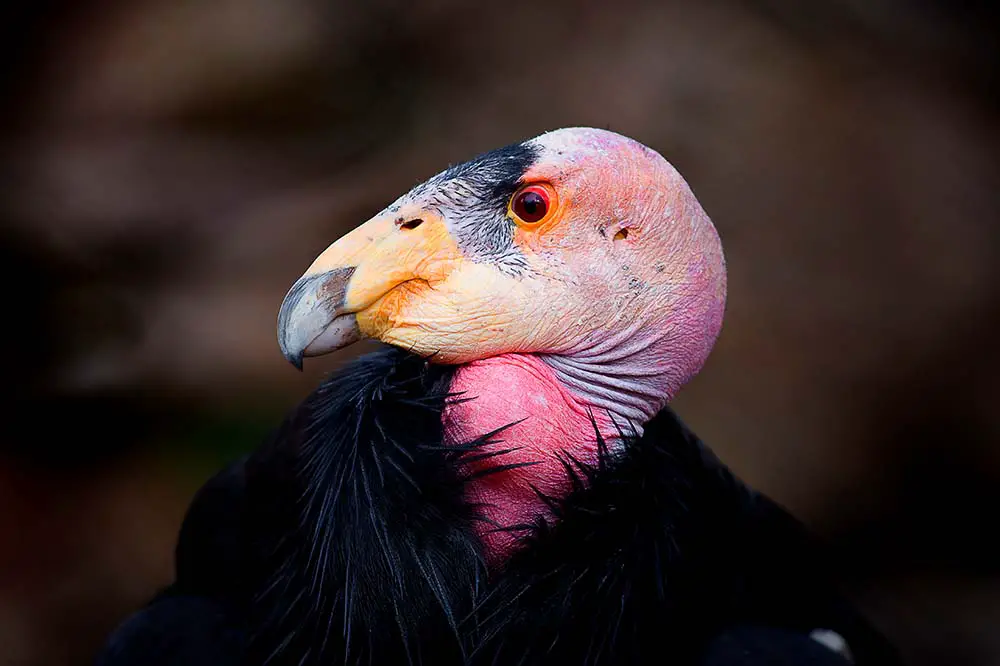
Left: King vulture | Martin Pelanek / Shutterstock & Right: California condor | James Michael Images / Shutterstock
10 Owls
All owls are contained within the order Strigiformes. They are commonly thought of as the nocturnal birds of prey although not all of them are active at night. There are two families of owl. Tytonidae, commonly referred to as barn owls and Strigidae, known as true or typical owls. They are one of the most admired orders of bird, often portrayed as mysterious, wise creatures in popular culture. One of the owls most unique traits is the ability to turn their heads a total of 270 degrees in some species (135 degrees to each side). Owls are able to do this due to the holes in their vertebrae being around 10 times the size of the corresponding arteries preventing a loss of blood flow to the brain.
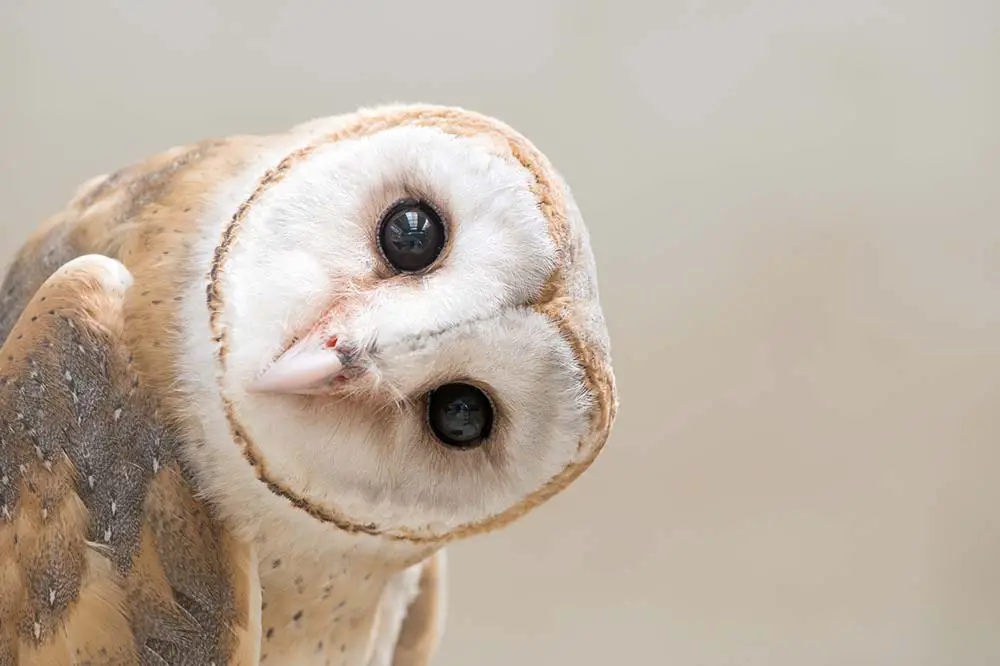
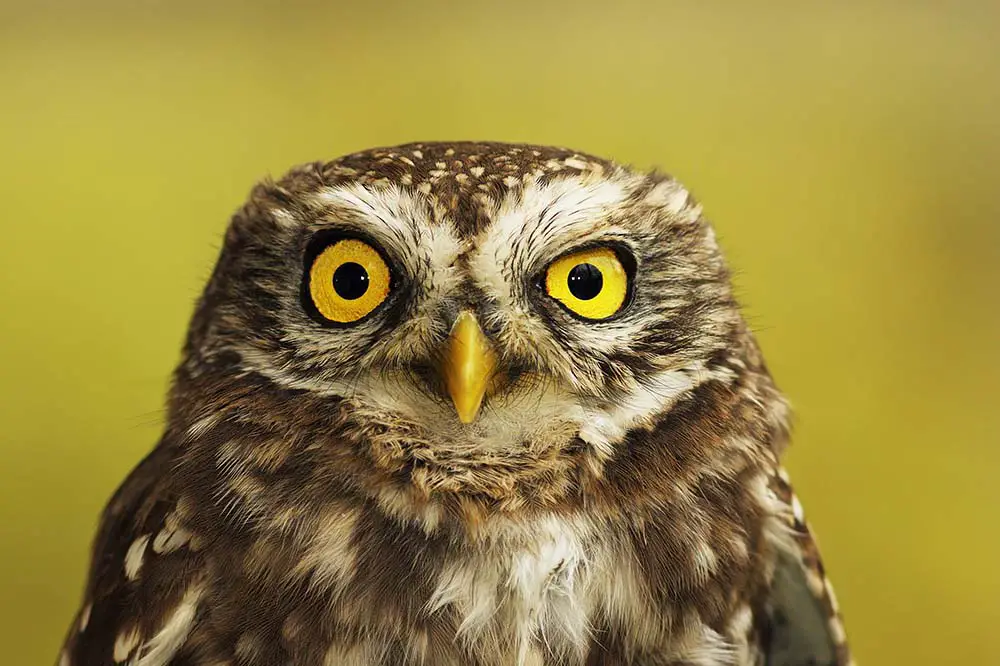
Left: Common barn owl | Anan Kaewkhammul / Shutterstock & Right: Little owl (a typical owl) | taviphoto / Shutterstock
Owls have an enormous range, in fact, it would be easier to show on a map where they do not exist; in the center of Greenland, several other islands close to the poles and the continent of Antarctica. Another fascinating owl fact; the activity of a particular species can be determined by their eye colour. Owls with black eyes are nocturnal—hunting at night. Owls with orange eyes are crepuscular—hunting at dusk and dawn. And owls with yellow eyes are diurnal—hunting in the day. The diurnal snowy owl has piercing yellow eyes and exhibits a very unique plumage with mostly white feathers and brown highlights. They are one of the largest owls, weighing up to 3.5lbs / 1.6kg and exhibit a wingspan of up to 1.7m (67 inches). They live in the colder northern regions of the northern hemisphere where they prey on small mammals such as lemmings, mice and rabbits and will occasionally hunt other birds and fish.
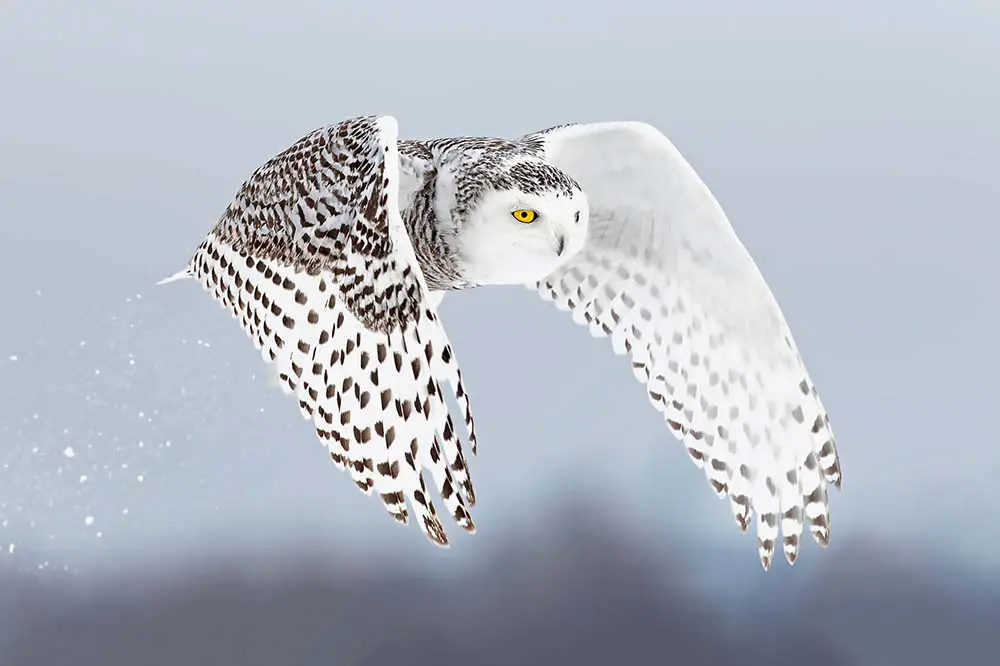
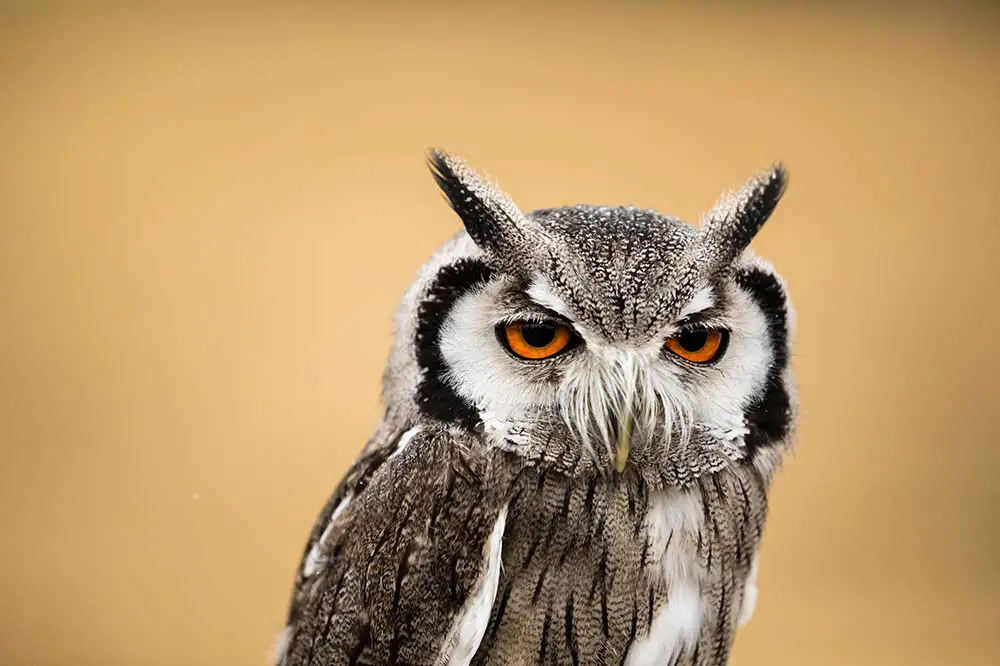
Left: Snowy owl in Ottawa, Canada | Jim Cumming / Shutterstock & Right: Portrait of a Scops owl with orange eyes | Pablo Santana Duran / Shutterstock
11 Seriemas
The members of the Cariamidae family are found on the South American continent and are known as seriemas. Taxonomically, they are located on the other side of the Telluraves clade and, in terms of birds of prey, are most closely related to falcons. They have long legs, similar to those of a secretary bird and fill a similar ecological niche, preying on the same kinds of animals, including snakes, rodents and insects. There are two species; The red-legged seriema has a larger range, found as far north as central Brazil, and the black-legged seriema, which is limited to the countries of Bolivia, Paraguay and Argentina. They have soft feathers that protrude from their vibrant red beaks and blue highlights around the eyes.
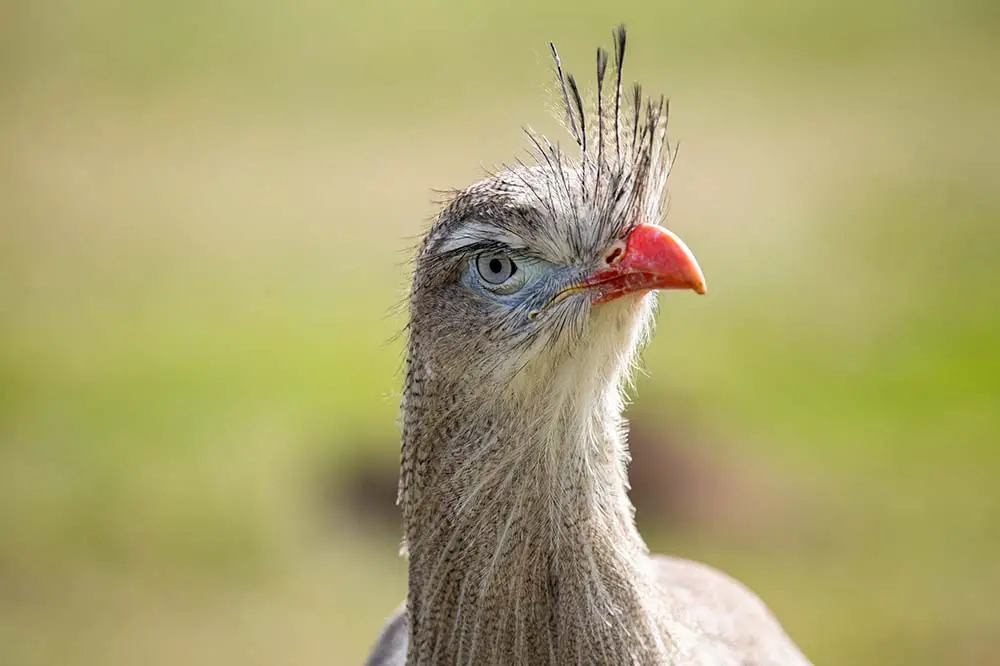
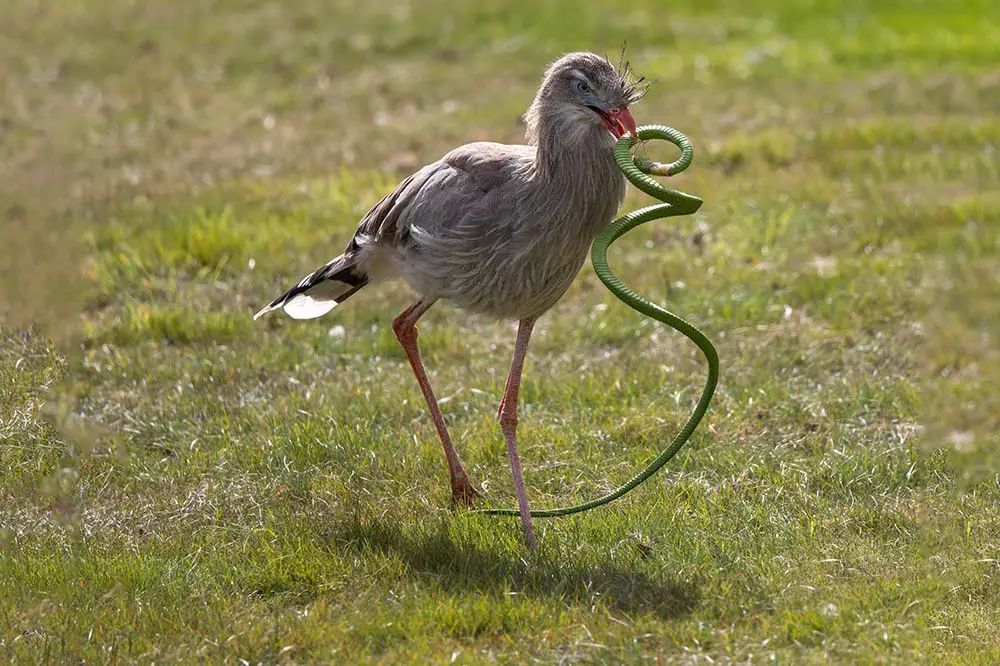
Left: Red-legged seriema & Right: Red-legged seriema with a snake in its beak | Wirestock Creators / Shutterstock
12 Falcons
The peregrine falcon is the fastest animal on earth. They dive at speeds of over 200 mph ( 322 kph) to snatch other unsuspecting birds mid-flight. Their facial mask is reminiscent of a viking! And their dark plumage and matching yellow talons make it one of the most visually impressive birds of prey. They are relatively small, weighing no more than around 900g (907 g / 31.96 oz) and have a maximum wingspan of 112 cm (44.09 in).
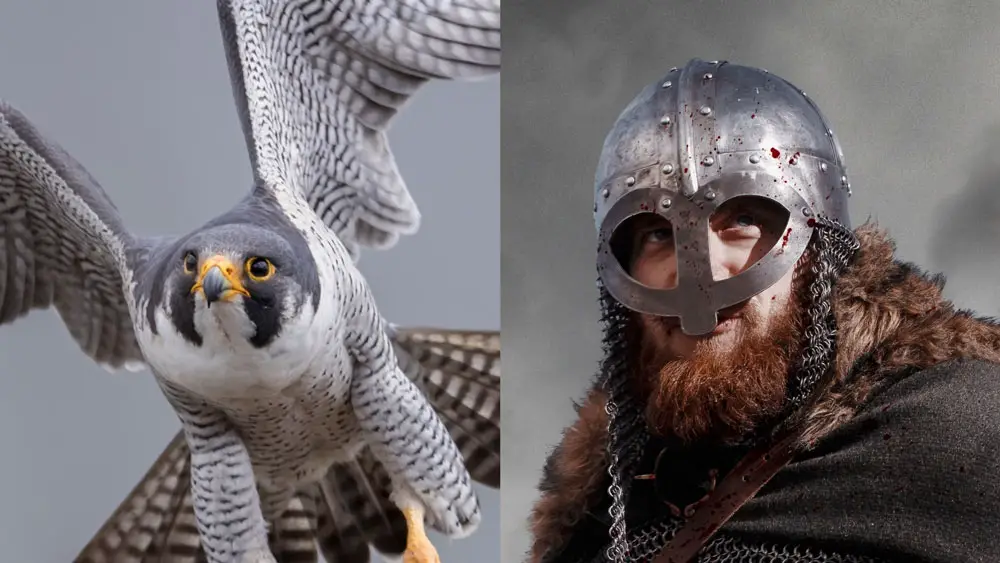
Interestingly, falcons lay a total of 2 to 6 eggs but do so at an interval of one every 48 hours. After hatching it will take falcon chicks up to 42 days to learn to fly and 3 years to reach sexual maturity. Falcons are one of two types of bird within the family Falconidae alongside caracaras, which we’ll discuss next. The smallest falcon and the smallest bird of prey is the collared falconet. These tiny predators weigh no more than 30 -50 grams, which is half of a least weasel! And will feast on grasshoppers, butterflies and other insects in the forests of south, east and southeast Asia.
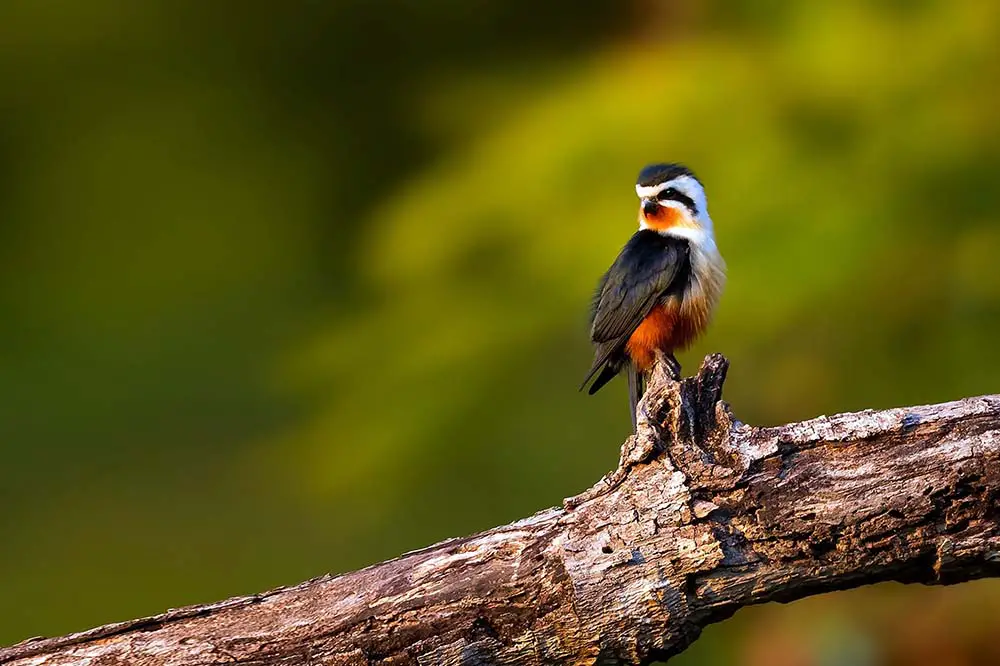
13 Caracaras
Although caracaras are sometimes thought of as true falcons, visually they are quite different and really deserve their own category. These colourful birds are quite unique in appearance, often sporting a colourful face and dark black feathers. All caracaras are found in the Americas. The crested caracara has the largest range, being found throughout the neotropical realm, the black caracara is found in northern South America and the white-throated caracara is found to the south. The crested caracara is one of the most colourful, sporting a reddish-orange mask, an almost emerald-blue beak and a black toupé atop a white throat and nape.
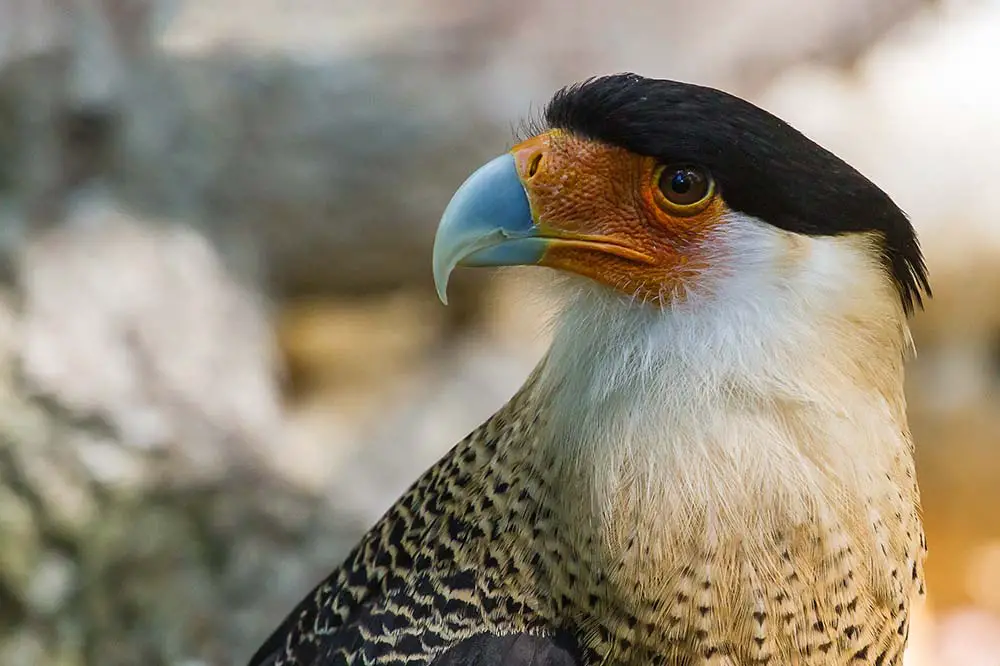
Sources
Encyclopedia Britannica, Animal Diversity, International Fund for Animal Welfare, Jarvis et al. 2014, Brown & Kimble 2021, Raptor Facts, Size Difference in Female and Male Raptors, Information About the Accipitridae Family, The Bald Eagle as a Symbol of American Independence, Eagle Nesting, A Hawk’s Eyesight, A Hawk’s Diet, Reversed Sexual Dimorphism, Definition of raptor ranges, Breeding and nesting biology in raptors, Hook-billed kite colouration, The shape of a Northern Harriers face, Northern harrier ear position, Hen harrier colouration, White-backed vulture range, Vulture’s scavenger behaviour, Flight feathers, Eastern osprey range, Are all owls nocturnal, How owls rotate their heads, Owls eye colour and meaning, Fastest animal on earth, Peregrine falcon facts & Collared falconet.
